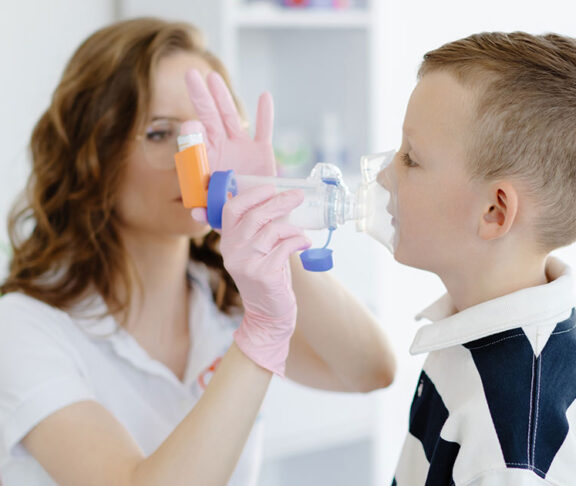Asthma laws and policies enacted in 22 states hold significant potential to reduce missed class time, keep children with asthma out of hospitals, and save lives.
In 2018, Illinois became the 11th state to pass legislation permitting undesignated emergency asthma medication in schools. Known informally as “Stock Asthma Rescue Medication in Schools,” the law allows schools to maintain a supply of asthma medication for use with any student or adult experiencing an asthma-related emergency.
In 2023, Illinois became the first state in the country to fund a statewide program. Led by the Asthma and Allergy Foundation of America’s MidStates chapter, in partnership with Chicago-based Respiratory Health Association and other stakeholders, the RESCUE Illinois Schools program launched in the 2023-2024 school year.
In the first year of implementation, Illinois has demonstrated strong outcomes, suggesting the significant potential of the program not only moving forward in Illinois but also nationally.
In its first year, 2,171 eligible public schools (68%) formally enrolled in the RESCUE Illinois Schools program. There were 657 reported student asthma emergency incidents occurring in 279 schools from 138 school districts in 43 of Illinois’ 102 counties.
Student profiles
Students relying on the emergency medication ranged from three to 18 years old, with an average age of 11 years. Most emergency incidents (62%) were reported from elementary schools.
Sixty-six percent of students receiving treatment were non-white: African American (39%), Hispanic (18%), and Other (8.7%). White students made up 28% of emergencies, and for 7% of students, race/ethnicity was not reported.
Just over half of students (52%) were male, 46% were female, and 0.2% were non-binary. Gender was not reported or unknown for 2.6% of students.
The most frequently reported trigger (for more than half of the students) was physical activity. The most common respiratory symptoms reported were shortness of breath or difficulty breathing (75%) and wheezing (53%).
More time in class, less at hospitals
Following treatment with RESCUE Illinois Schools medication, the majority of students (76%) were able to return to class to continue their school day. While 22% of students went home, just 11 students (1.7%) required emergency medical transport to a local hospital.
To understand the potential impact of the RESCUE Illinois Schools program, we analyzed the “alternate disposition” responses from the RESCUE program portal. The specific question asked reporting nurses, “In your professional opinion, what would have happened if the child did not have access to RESCUE-provided medication?” Based on these responses:
- Just 13% of students (411 fewer) would have been able to return to class.
- 58% of students (234 more) would have been sent home.
- 22% of students (135 more) would have been transported to an emergency department. Of these students, 15 would have been admitted to the hospital.
Beyond the educational and healthcare benefits to students, the program is demonstrating significant healthcare savings. Considering the mitigated ambulance, emergency, and hospital costs projected by school nurses, more than $1.5 million in healthcare costs were avoided thanks to the RESCUE Illinois Schools.
In addition to the benefits described above, other savings of the RESCUE Illinois Schools program included a reduction in missed school hours (over 1,000) and missed work time and lost wages ($72,000) for parents and guardians who would have had to leave work to either take their child home from school or to an emergency department.
Lessons for replicability
Passing a “stock albuterol” law is the correct first step for states, but only with fully funded execution can states both support children and save dollars. To replicate this win-win opportunity, RESCUE considers three key components.
First, RESCUE learns from states’ unique data around asthma rates and exacerbation. Then, RESCUE applies that data to better understand the potential health and financial benefits of the program to all payers, but especially that state’s taxpayers and its Medicaid program.
Finally, RESCUE engages all the concerned groups who will benefit from the program implementation. School nurses, students, families, coaches, superintendents, legislators, and more all stand to benefit from the program. Adoption from local champions empowers RESCUE to make the greatest impact and to create sustainable systems around asthma interventions in schools and their extensive related costs.

